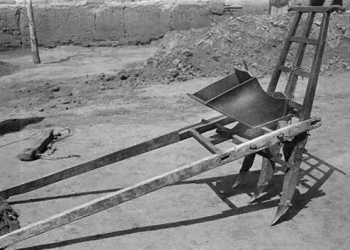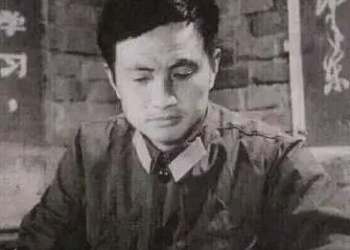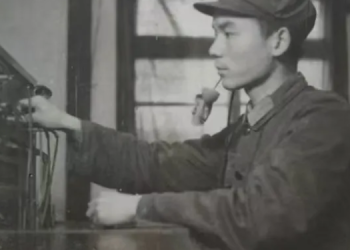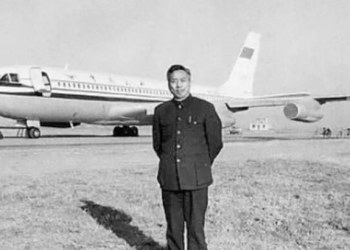The art of Kui fan, known as Kui Yi, has a long and rich history in Xinhui, Guangdong. As early as the Eastern Jin Dynasty, palm trees were already being cultivated and processed into artistic crafts in the region. During the Qing Dynasty, particularly from the reign of Emperor Qianlong to the end of Emperor Guangxu’s rule—a span of over 200 years—the development of Kui Yi reached its peak.
Kui Yi is a traditional Guangdong folk craft that uses the leaves of the palm tree (Livistona chinensis) as raw material to produce both decorative and practical handmade items. It integrates multiple techniques such as modeling, weaving, embroidery, painting, and printing, representing a unique fusion of artistic expression and craftsmanship.
This heritage is mainly passed down in Xinhui District of Jiangmen City and its surrounding areas. Kui fan crafts are celebrated for their perfectly shaped cores, smooth, white, and flexible fan surfaces, and meticulous weaving techniques. The palm-leaf fan (Kui Shan), with its elegant form and exceptional craftsmanship, serves as the most iconic symbol of this tradition. It is also recognized as one of the four major traditional crafts of Guangdong Province.
A Kui fan refers to a fan made from palm leaves through processes such as cutting, sun-drying, roasting, stitching, or weaving. Based on the crafting techniques, Kui fans can be categorized into two main types: pyrography palm fans (Luo Hua Kui Yi) and woven palm fans (Kui Zhi Shan).

The pyrography palm fan (Luohua Kui Yi Shan) is crafted from an entire palm leaf and decorated using a specialized heated “iron pen” to burn intricate designs onto the fan surface. Because of this unique technique, it is also known as the “fire-painted fan” (Huo Hua Shan). It represents the core artistry of Xinhui’s palm craftsmanship and, alongside sandalwood fans, silk gauze fans, and bamboo-thread fans, is hailed as one of China’s Four Famous Traditional Fans.
Xinhui Kui Yi brings together weaving, embroidery, painting, and printing techniques into a seamless art form, elevating palm-leaf craftsmanship to an extraordinary level of artistic excellence. The pyrography fan, first created by veteran artist Chen Wan in 1952, was officially recognized by the Chinese government as a specialty craft item. These fans are lightweight and translucent, with images burned onto the leaf surface using techniques that emulate traditional Chinese painting. The resulting designs are vivid, delicate, and imbued with poetic depth.
Woven palm fans, first introduced in 1911, feature exquisitely interlaced fan bodies and are often embroidered with vibrant patterns using multicolored threads. The combination of intricate weaving and embroidery results in fans that are not only visually striking but also durable and elegant.
Guan Shanyue, a master of the Lingnan School of painting, once visited to observe the process and reportedly attempted pyrography more than sixty times, fascinated by the complexity and charm of this traditional art.

The Woven Palm Fan (Kui Zhi Shan) is intricately crafted by weaving palm leaves and is categorized into several types based on decorative techniques, such as collage-pattern woven fans and embroidered woven fans. The design of Xinhui palm fans often draws from the natural heart-shaped contour of Trachycarpus (Chinese fan palm) leaves, symbolizing the auspicious notion of “embedding goodness in the heart” — or “fan” (扇) as a homophone for “kindness” (善). Depending on size, these fans are further classified as ox-heart fans, chicken-heart fans, and more.
During the Ming Dynasty, Xinhui palm fans were elevated to the status of imperial tribute. Inspired by the elegance of palace fans, local artisans developed new fan shapes, such as full moon, banana leaf, lotus, and begonia blossom. These graceful designs added a touch of delicate femininity to the palm fans, emphasizing symmetry with the handle as the central axis. The result was a refined aesthetic known in traditional Chinese culture as “elegant and upright”, symbolizing harmony, reunion, and peaceful order.
Among the artisan community, the time-honored technique of “three steamings and three sun-dryings” has been passed down for generations — echoing the Daoist cosmology of “three giving birth to all things”. Material selection is equally meticulous: only palm leaves harvested after the Start of Autumn (Li Qiu) are used, as they offer optimal pliability and strength. The drying process avoids the harsh midday sun to preserve the leaves’ natural jade-green hue. During weaving, artisans emphasize mind-hand coordination, infusing Eastern aesthetics into the vertical and horizontal interlace.
This philosophy of harmony between man and nature transforms each fan into a coexistence of natural beauty and human spirit.
When we gaze at the delicate grain of a Xinhui palm fan, we witness not only the ingenuity of Lingnan ancestors, but also a living paradigm of how Eastern civilization reconciles the relationship between humanity and nature. The ability to transform organic materials into cultural artifacts, the wisdom to balance practicality with elegance, and the courage to innovate between tradition and modernity — these are the enduring codes of Chinese civilization.
In today’s age of ecological awareness, the significance of Xinhui’s palm craftsmanship has transcended the scope of traditional artisanship, becoming a vital reference for redefining modern aesthetic values.
In the palm workshops by the ancient canal, seasoned craftsmen continue — day after day — slicing through emerald green fan leaves. The gentle rustling of bamboo knives gliding along palm veins harmonizes with the hum of digital printers, composing a fascinating duet between tradition and technology. This dual symphony is a profound metaphor for cultural transmission: true cultural DNA never disappears — it simply blossoms into new and radiant forms in the changing fabric of time.











